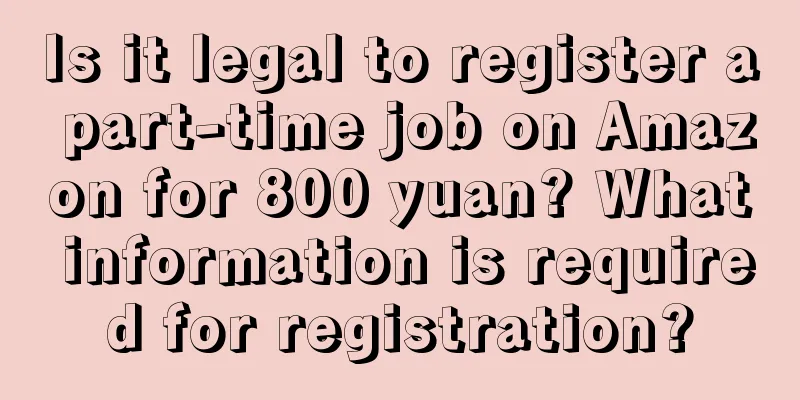Why does Luckin Coffee make huge money every year in its private domain, but you spend a lot of energy and money on your private domain but still can’t make it?

This is not a clickbait title. I met a company a few years ago. It was one of the first companies to do private domain business. After changing several groups of people, it spent money but failed to achieve anything. Recently, the person in charge changed and talked to me. I really want to answer this question and phenomenon. We talked about Luckin’s integrated product and business model earlier. Today I would like to talk more about the success of Luckin Coffee’s private domain. It is a recognized success case in the industry and has always been a focus of attention and study. I have written about this before (link at the end of the article), but as I delve deeper into it, I always have new ideas. When it comes to Luckin Private Domain, the most convincing and enviable thing is its sales data. For example, in 2020, the community sold 30,000 cups a day; By 2023, the social network will be able to sell 200,000 to 300,000 cups per day, a tenfold increase. Assuming a price of 9.9 yuan per cup, at least 2 million cups will be sold per day, contributing nearly 1 billion yuan in sales per year. Wow, that's a lot of money. If the private domain colleagues in ordinary companies could achieve one-tenth of its sales, they would have been able to dominate the company long ago. But 1 billion is really a small amount of money for Luckin. You see, its sales in 2023 will be more than 20 billion, and it is said to exceed 30 billion in 2024. Private domain sales are only 1/20 to 1/30. The situation of each company is different, and absolute sales figures are not very comparable. So, I say that data is not the key. The key question is what companies should ask:
And what about your private domain? You can only make a little money, stumbling and working hard, and it is not sustainable? What is the reason? Where is the gap? Without considering the overall situation, it is not enough to consider a specific area. It is smart to calculate small accounts, but it is foolish to calculate big accounts. This is the fundamental reason why 90% of enterprises fail. What is the answer? Luckin Coffee will calculate three economic accounts. It has chosen the model of integrating product and transportation. Luckin Coffee started out by playing with the big private domain, while you have been doing the "small private domain". So, what is the difference between a large private domain and a small private domain? In my book "Super User Growth", I talked about the definition of private domain, and there is the following picture, which basically covers the so-called large and small private domains. However, Yang Fei has his own understanding of the product-operation integration model. He divides the private domain into three levels: large, medium and small. The value, advantages and disadvantages of each level and how to implement it are all very clear. He said that small private domains are corporate WeChat, Moments, and social groups. These private domains can bring certain user accumulation and user repurchase, but without the data support of large private domains, the communication between small private domains and users can easily become inefficient harassment. The medium private domain refers to the public accounts, private accounts, enterprise accounts, and mini-programs in the entire WeChat ecosystem. This will form some combined strategies to enrich private domain operations, and their conversion rate will exceed that of the small private domain. The large private domain is a larger user group formed based on the company's own APP and user data management platform. Of course, it can also be regarded as a company's digital operation system. It is with this system that the platform can truly understand users and formulate the rules of "people, goods and places". With this digital system, the above-mentioned small private domains and medium private domains have become a touchpoint to reach users and become a contact tool. To put it simply, Luckin's business is a large private domain, which is a digital system formed by combining WeChat private domain + its own APP + customer data middle platform CDP. The core is based on data operation. The purpose is not the immediate sales conversion, but to understand users and formulate rules for "people, goods and places". Therefore, the core differences between large and small private domains are three:
Otherwise, how many people would be needed to complete 1 billion private domain sales? The so-called big private domain is big data. The small private domain is a small abacus and a small vision. Only when the private domain is connected with CDP can the enterprise customer data be used. This data includes three layers: basic user information, consumption data, and social behavior data. This is why they say data is oil. In small private domains, all they play with is content, and they don’t capture or pay attention to any data. In the private sector, the focus is on content + activities. There are data but they are not comprehensive and rich enough, and many teams do not understand data analysis. Only a large private domain can capture, analyze, and personalize data from a wider range of user groups. This also requires companies to have a data tool platform, provided that they value data. It is precisely because of these data that Luckin Coffee can reduce its large private domain costs, because 90% of its marketing actions can be automated. In my book Super User Growth, I talk about the 6-step method of private domain operation: IP, connection, activation, stratification, repurchase, and fission. Why do I talk about stratification at the beginning? Because stratification is data application, which is the core of private domain operation. It is to understand users and realize refined operation through rule system. Luckin Coffee can provide users with extremely refined services through the integration of product and transportation. Having said that, everyone should understand that when I talk about big and small private domains, I am not referring to the size of the enterprise, but the thinking and application of "big data". The value of Luckin's "big private domain" lies not only in the conversion of private domain sales, but also in the empowerment of store operations and product innovation. Therefore, brand-effect integration, store operations, and product innovation are the three major engines of Luckin's growth. Let me say it again, data is oil, and data is the foundation of AI marketing. What private domain data an enterprise needs, how to analyze it, and how to build a model all vary depending on the business. Small teams can use manual statistics first, while medium and large companies must use software tools. Only by combining user data with private domain operations can we reduce user harassment, increase user personalized service experience, accurately tap user value, and achieve sustainable sales growth. Therefore, small private domains make small money, and large private domains make big money. This is the subtle difference between large and small private domains. |
<<: The polar reversal, foreigners start selling Chinese AI courses on X?
>>: Complete! [Business Analysis Model] Construction Guide
Recommend
Do newbies need ERP to start working on Amazon? How can newbies start working on Amazon?
Domestic e-commerce is not that easy to do, but cr...
If you want to double your private domain conversion rate, you must know these 8 "psychological effects"
If you want to double the conversion rate of priva...
One year after TikTok Shop entered the US, where is content e-commerce heading?
As TikTok Shop develops steadily in the US, it is ...
Industry differences in data analysis positions
It is very important for data analysts to choose t...
Private Domain Operation: Where do the 20 million private domain users of Liby, the No. 1 domestic daily chemical brand, come from?
In an increasingly competitive market environment,...
Is Shein no longer available in the country? How can I access the Shein official website?
Shein (formerly known as SheInside) is a well-know...
How to solve the problem of Amazon's follow-up sales? This is the most effective solution!
Nowadays, competition in the e-commerce industry i...
Where can I apply for Shopee live streaming? What are the requirements?
In addition to domestic e-commerce platforms such ...
How long does it take to incubate a new Amazon seller? How many days after completing Amazon registration can new products be launched?
For new sellers, they usually encounter some chall...
When writing a data analysis report, don’t make these mistakes
In the field of data analysis, an accurate, clear ...
What types of promotions does Shopee have? What are the characteristics of the platform?
Shopee merchants can promote sales to boost buyers...
How does Amazon analyze the market? What aspects does it analyze?
Amazon is the best developed cross-border e-commer...
What do the hot-selling products on Pinduoduo look like?
In the fiercely competitive e-commerce market, how...
What are the SEO methods for Amazon titles? How to improve product rankings?
For Amazon merchants, after uploading products, th...
Let’s talk about the consumer journey
What is the consumer journey? This article introdu...









